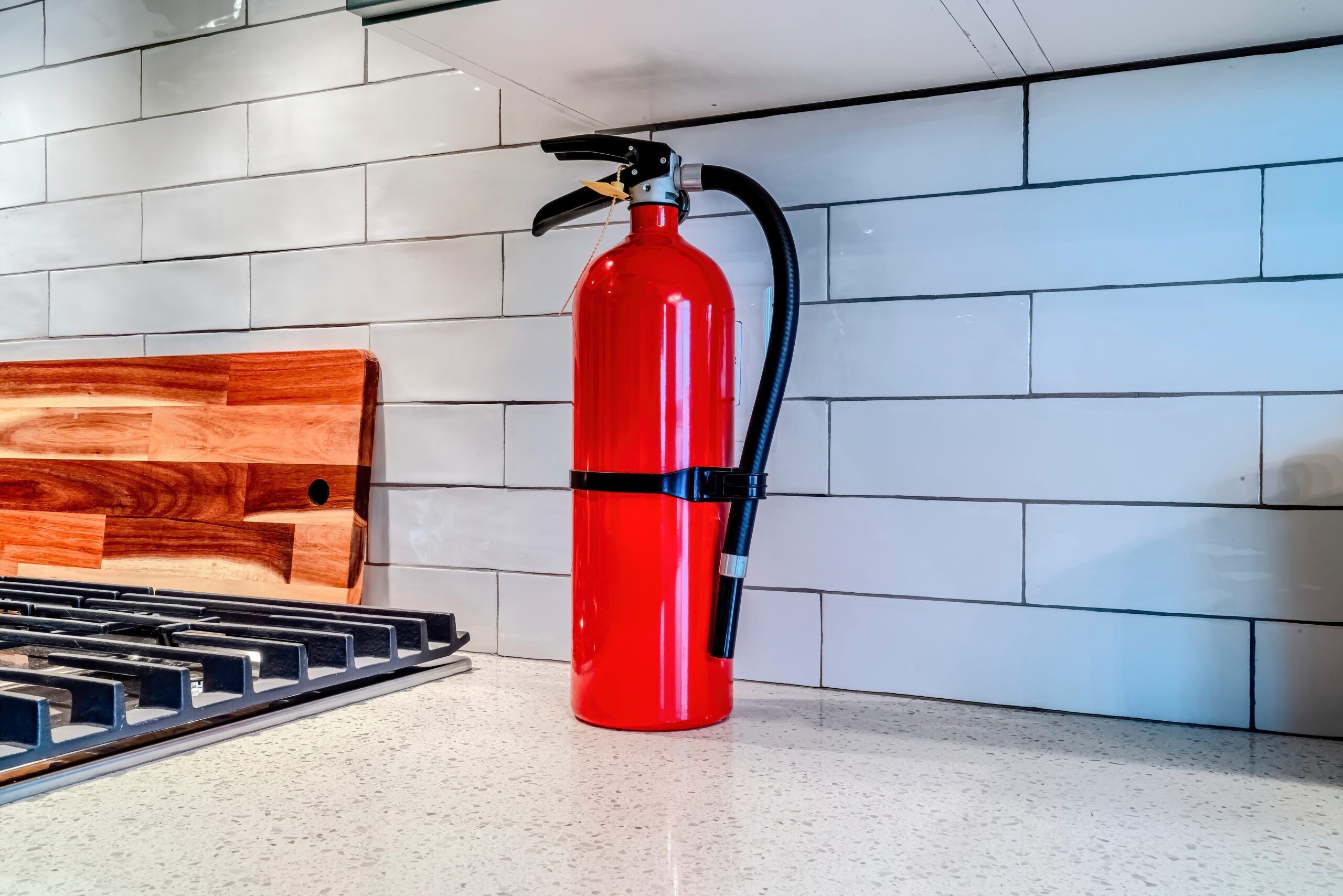
Bright red fire extinguisher against white tile backsplash inside home kitchen. A cooktop and wooden chopping board can also be seen on the countertop.
Accidents can happen anytime and anywhere, and having a fire extinguisher at home can be the difference between a small fire and a devastating catastrophe. Home fires are a common occurrence, and they can cause extreme damage and even death if not handled properly. In this blog post, we will discuss the lifesaving importance of having a fire extinguisher at home and what you need to know about these essential safety devices to protect your family and your property.
Why a Fire Extinguisher Is Essential
For homeowners, having a fire extinguisher at home is not only essential but a legal requirement in some states. Fire extinguishers are the first line of defense in case of a fire and can help in putting out a small fire before it gets out of control. These safety devices can save lives, prevent injuries, and minimize property damage. However, it is critical to ensure that your fire extinguisher is kept in good condition and easily accessible in case of an emergency.
Types of Fire Extinguishers
It is essential to have the correct type of fire extinguisher for your home’s specific needs. Different fires require different types of extinguishers, and using the wrong one can make the situation worse. There are four main types of fire extinguishers: water, foam, dry powder, and carbon dioxide. Water extinguishers are best suited for putting out fires caused by paper, wood, and textiles. Foam extinguishers can be used for class A or B fires, meaning those caused by flammable liquids. Dry powder extinguishers are suitable for class A, B, and C fires, meaning those caused by electrical equipment or gases. Finally, carbon dioxide extinguishers are used in class B and electrical fires, and they do not leave any residue behind.
Where to Keep Your Fire Extinguishers
It is recommended to keep at least one fire extinguisher on each level of your house and near potentially hazardous areas such as the kitchen, garage, or furnace area. Make sure that they are easily accessible and not obstructed by furniture or other items. Extinguishers need to be checked regularly to ensure that they are in good condition. You can do this by checking the expiration date, looking for any damage or leaks, and ensuring that the pressure gauge indicates that the extinguisher is full.
How to Use a Fire Extinguisher
Knowing how to use a fire extinguisher is essential when a fire occurs. The acronym PASS (pull, aim, squeeze, and sweep) provides a simple and effective method for using a fire extinguisher. First, pull the safety pin from the extinguisher. Then aim the nozzle at the base of the fire, not at the flames. Squeeze the handle to start releasing the extinguishing agent, and sweep it back and forth to extinguish the fire. If the fire is too large or out of control, do not attempt to extinguish it yourself; evacuate your home immediately, and call the fire department.
Having a fire extinguisher in your home is essential to ensure your safety and prevent property damage or loss. Remember to choose the correct type of extinguisher for your needs, keep the extinguishers easily accessible, and check them regularly. Knowing how to use a fire extinguisher can be lifesaving, so take the time to learn the basics of PASS. If you ever have questions that need to be answered about your fire extinguisher, feel free to contact local specialists like Fire Tech Extinguisher Service or even your local fire department. Stay safe and protect your family by having a fire extinguisher in your home.


